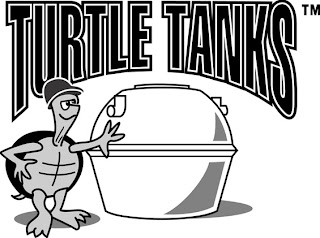Finding Failing Septic Systems with Dyes
Dye tests help find failing septic systems
By KIMBERLY CAUVEL @Kimberly_SVH Feb 18, 2016 (0)
Dye tests help find failing septic systems
Scott Terrell / Skagit Valley Herald
Dye tests help find failing septic systems
Scott Terrell / Skagit Valley Herald

Environmental health specialist Dave English examines a runoff sample that will be tested for indicators that a septic system has failed.
Dye tests help find failing septic systems
Scott Terrell / Skagit Valley Herald

Karen DuBose (right), county pollution identification and correction specialist, and Dave English explain how runoff samples are collected in the field.
MOUNT VERNON — With dozens of pollution sources including septic systems and livestock in the Samish River watershed, it’s not easy to pinpoint the origin of the fecal coliform bacteria found in the area.
That hasn’t stopped Skagit County staff from continuing to scout out sources of the bacteria, which can indicate the presence of feces, and other potentially harmful bacteria.
Sometimes that work lands staff in the lab, where they try to determine whether samples from streams in the watershed are contaminated.
Using dye tests, environmental health specialist Dave English evaluates whether material from septic systems is getting into the water.
Using dye tests, environmental health specialist Dave English evaluates whether material from septic systems is getting into the water.
It’s not as simple as putting dye down a household drain and waiting to see if it trickles downstream.
Dye tests take about two weeks of field work, and then additional time in the lab.
“Is that green? I don’t know,” English said while holding up a test tube in the county lab. Unable to tell, he moved on to another.
“Now that — that is green,” he said.
English and pollution identification and correction program coordinator Karen DuBose looked over five dye test samples in the lab Feb. 5.
Though they eyeball the samples out of habit, they got a machine about six months ago that gives more accurate readings.
The machine, called a fluorometer, translates the amount of color or florescent material present into a number. The higher the number, the more dye is getting out of the septic system.
In the past six months, English has done about 30 dye tests, half of which were in the Samish River watershed.
The county and the state have a strong focus in the watershed because of the shellfish harvest areas in Samish Bay that are affected by pollution and river flow closures.
The state Department of Health closed the bay to shellfish harvest Monday, following rain that spurred high river flows. Because high river flows correlate with high levels of bacteria, the department closes harvest as a precaution when the river exceeds a certain flow.
Dye tests are just one way the county works to pinpoint sources of fecal coliform bacteria in an effort to reduce the pollution and related shellfish harvest closures.
During their Feb. 5 trip to the lab, English and DuBose chose to run the most visibly green sample through the machine first.
“This one will be high,” English said while pouring some of sample into a tube that fits into the fluorometer machine. “This one will obviously have a lot of zeros because it’s visibly a nasty test.”
Within seconds, the machine’s screen flashed with a reading of 24,721 — more than 220 times the control sample.
English said if the dye reading is 10 times or more than the control sample, that indicates a failing septic system.
Doing dye tests to find out if there is a septic system problem requires landowner permission.
When landowners agree to a dye test, English and DuBose first place an absorbent packet in the nearest stream or ditch — and downstream of the septic system — as a test run, or control sample. This is to ensure other materials that could throw off the test, such as radiator fluid, aren’t in the water.
When landowners agree to a dye test, English and DuBose first place an absorbent packet in the nearest stream or ditch — and downstream of the septic system — as a test run, or control sample. This is to ensure other materials that could throw off the test, such as radiator fluid, aren’t in the water.
The packets are left for up to 10 days.
After collecting the control samples, English and DuBose put new packets in place before putting dye into a toilet and sink in the landowner’s home.
When the packets are collected several days later, no dye should be in the samples if the septic system is functioning properly.
When English comes across a septic system failure, he notifies the landowner.
Septic systems can fail — meaning they are not functioning properly — for a variety of reasons, and remedies can range from minor fixes to replacing the entire system.
Septic systems are intended to hold sewage and household wastewater and release it slowly into the ground, where the soil can act as a natural filter.
If the material is not being held properly or is not filtering slowly enough, contaminated water can get into nearby streams.
A system could fail because of a broken part or crack in the tank. Or it could fail because too much weight has been put on the drainfield and has broken pipes, most commonly by parking vehicles in the area, DuBose said.
— Reporter Kimberly Cauvel: 360-416-2199, kcauvel@skagitpublishing.com, Twitter: @Kimberly_SVH, Facebook.com/bykimberlycauvel
Turtle Tanks Septic Systems, Serving British Columbia Since 1984


Comments
Post a Comment